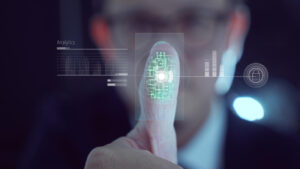In the ever-evolving landscape of personal security, biometric analytics integrated into mobile devices have emerged as a revolutionary force stated Bahaa Abdul Hadi. These cutting-edge technologies, driven by machine learning and artificial intelligence, provide users with a highly secure means of safeguarding their sensitive information. As we delve into the depths of this blog, we will explore the fascinating journey of biometric authentication, from its historical roots to its current prominence.
The Evolution of Biometrics in Mobile Devices
The evolution of biometrics in mobile devices is a captivating journey marked by relentless innovation. It all started with the rudimentary fingerprint sensors, which made their debut as a security feature. Over time, these humble beginnings have given way to a plethora of biometric authentication methods, each more advanced than the last.
Facial recognition, with its speed and convenience, became a standout feature. Iris scanning, too, gained traction, offering an even higher level of security. These developments signify a shift from traditional PINs and passwords to a more seamless and secure user experience, marking a significant milestone in the ever-advancing realm of mobile device security.
Types of Biometric Authentication
When it comes to biometric authentication on mobile devices, users are presented with a diverse array of choices. Fingerprint recognition, a pioneer in this realm, remains a popular method due to its ease of use and reliability. Facial recognition, however, has gained substantial ground, offering a swift and contactless means of authentication.
Iris scanning, a more recent entrant, elevates security by capturing intricate details of the eye, making it a top choice for those who prioritize utmost protection. These diverse options cater to individual preferences and security needs, ensuring that users can find a method that suits them best.
The Role of Machine Learning and AI
Machine learning and artificial intelligence play pivotal roles in enhancing biometric analytics on mobile devices. These dynamic technologies continually adapt and learn, allowing for improved accuracy and robust security. In the case of facial recognition, AI algorithms analyze facial features, distinguishing even subtle variations for precise identification.
Additionally, machine learning models adapt to changes in an individual’s biometric data, ensuring consistency over time. Plus, these technologies bolster fraud prevention by identifying suspicious activities and patterns, reinforcing the security of biometric authentication. As AI and machine learning continue to evolve, biometric solutions on mobile devices become more powerful and reliable, making personal data protection increasingly robust.
Conclusion
Biometric analytics in mobile devices have rapidly emerged as the vanguard of personal security, offering a seamless and robust means of safeguarding our digital lives. From fingerprint recognition to facial and iris scanning, these technologies have come a long way, and their evolution shows no sign of slowing down. The infusion of machine learning and artificial intelligence further fortifies these methods, making them increasingly accurate and reliable.
However, as we embrace the future of biometric authentication, it is crucial to address privacy concerns and ensure stringent data protection measures. Despite challenges and security threats, the promise of biometrics in mobile devices shines bright, offering a safer and more convenient digital experience for users. The article has been authored by Bahaa Abdul Hadi and has been published by the editorial board of Identity Herald. For more information, please visit www.identityherald.com.




